FORT JACKSON, S.C. — Watching the Army recruits run to their designated location, the drill sergeant could feel the tension, the excitement, the anticipation. The only question now was, who was more excited–her or the trainees?
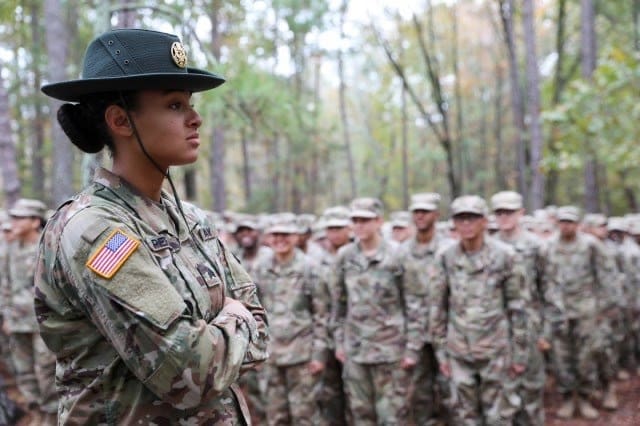
Drill Sergeant Alycia Perkins is a new drill sergeant. In fact, she has only been ‘on the trail’ for a few weeks and everything is new and exhilarating to this U.S. Army Reserve drill sergeant. Fresh out of the U.S. Army Drill Sergeant Academy, this young noncommissioned officer is full of the latest knowledge and knows all the regulations, training goals and safety protocols. She had worked extremely hard on earning her Drill Sergeant Hat and Badge, and now, here she stood before a group of civilians she had helped transform into Soldiers. They were just days away from graduating from U.S. Army Basic Combat Training, and Perkins could not be more proud.
“During this Blue Phase (the third and final part of Basic Combat Training), I have gotten a lot of hands-on mentoring. It is not so much of the yelling and the teaching them anymore, it’s more about helping them understand who they are and what kind of Soldier they CAN be, and then helping them realize their goals,” said the all-wheeled vehicle mechanic from Bravo Company, 2nd Battalion, 485th Infantry Regiment, 2nd Brigade, 98th Training Division (Initial Entry Training).
As a U.S. Army Reserve Drill Sergeant, Perkins had not been with the trainees through their entire cycle of three phases: Red, White and Blue. Reserve drill sergeants typically assist Active Duty drill sergeants for a phase rather than a complete cycle. However, they can stay longer based on needs and availability. Perkins entered this particular cycle at Fort Jackson, South Carolina cycle in the Blue Phase, which allowed her to do more mentoring and less yelling.
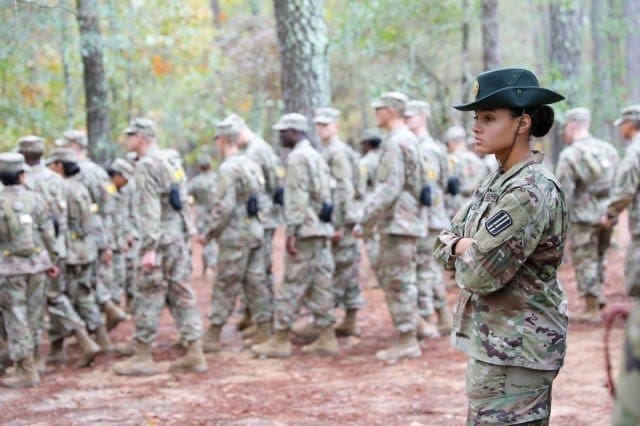
“The screaming and yelling [in Red phase] is more of a shock. It is to put the trainees into a stressful environment so they can learn to think on their feet, because that is the environment you would have when deployed,” said the Columbia, South Carolina resident.
“As you move on through the different phases, you kind of step back from being ‘the Hat and the Badge,’ and what people typically think a drill sergeant is, and you go more towards a mentoring phase and mentoring position,” said Perkins.
In her short time on the trail so far, Perkins said she finds this part of the job the most rewarding, and the main reason for her own transformation into becoming a drill sergeant.
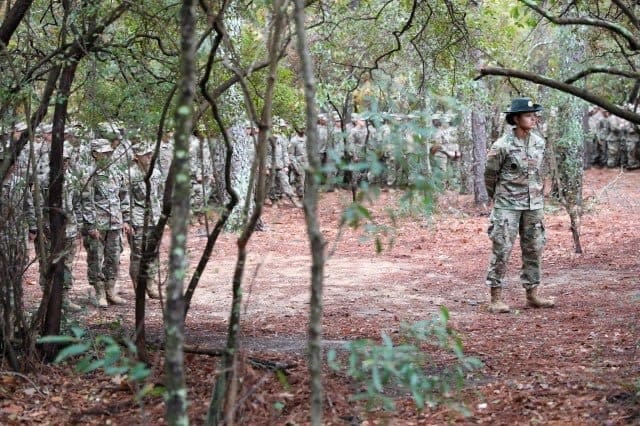
“I don’t know if [the Drill Sergeant Academy] changed me necessarily, as much as built what was already there. I have always been a pretty motivated Soldier and wanted to help people.”
In the teacher and mentor phase, Perkins discovered people from across the Nation and with varying reasons for joining the Army. And some of the motivation she witnessed surprised the young drill sergeant.
“You expect a base level of motivation, but some of the trainees who come through here really have some personal stories and personal attachments that help drive them to be a Soldier, and help get them through Basic. So hearing these stories, and where people are coming from, and how diverse it is, surprised me a little bit.”
Of course, motivation alone will not get a trainee through Basic Combat Training. They have to meet all the standards and pass all the physical and mental requirements. The drill sergeant is only there to guide the recruits and give them all the tools to succeed. But in the end, the trainee must do it on their own, just like Perkins did when she completed the Drill Sergeant Academy.
After spending time with the trainees and getting to know them a little, it can be hard for a drill sergeant to see motivated trainees fail out for various reasons, said Perkins.

“On the flip side, it is very rewarding to see a trainee who has struggled, overcome those struggles and make it to graduation,” said Perkins looking out over her Soldiers practicing for graduation.
Of course, being new to the responsibilities of a drill sergeant, Perkins admits that she still has a lot to learn.
“Just because you graduate the Academy does not mean the learning is over. Things are always changing. Even since I graduated, things have already changed. A drill sergeant has to keep themselves up-to-date and be as knowledgeable as they can be.”
With the eyes of every recruit looking to drill sergeants as role models, Perkins said there is no choice but to strive to be the epitome of perfection. It’s not an easy goal to achieve but it is just a responsibility of the role.
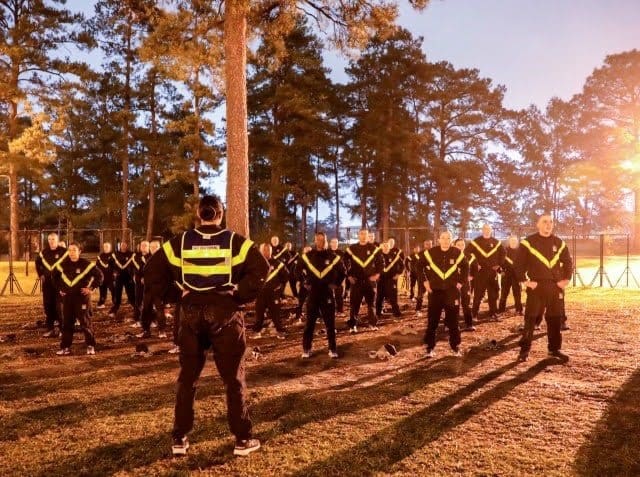
Another responsibility for drill sergeants is making sure all the training requirements are accomplished. The simple logistics of moving a group of trainees around in an efficient manner to complete the fast-paced schedule of Basic Combat Training is an education that Perkins found invaluable, and a bit taxing.
“What I found to be the most challenging was all the paperwork and the behind the scenes stuff you do as a drill sergeant: setting up training, getting with everyone else to make sure the schedules are online…This is my duty week this week, so I am really learning everything that goes into planning just one training exercise. That has been the most difficult, for me at least.”
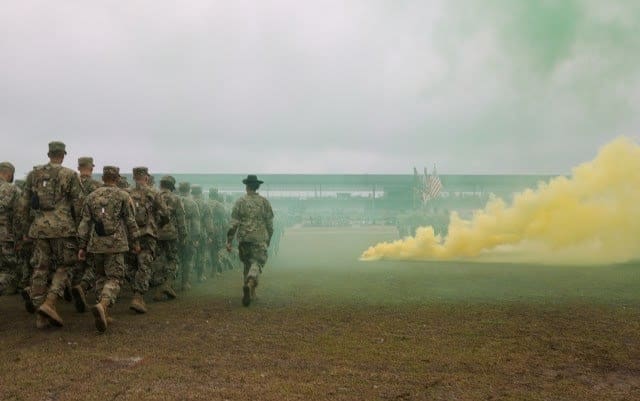
So while Perkins has been leading trainees, she has been learning herself. The Training and Doctrine Command environment is a very supportive place full of people willing to help, which has allowed me to become more confident, said Perkins.
“I have realized, I can handle more than I think I can.”
This type of confidence is critical for a leader required to be a role model, an example of Army perfection. However, it is something that any noncommissioned officer could achieve, said Perkins.
“Anybody can be a drill sergeant. If you have the time, the motivation, and the patience to do it…and the drive. It does take a lot. These are very long days–4:30 a.m. to 7:30 or 8:30 p.m. on a normal day. So it’s not for the faint of heart,” explained the new drill sergeant.
The responsibilities of the job are not for unmotivated people who don’t care about the quality of their work. It requires a disciplined effort and a generous amount of pride and ownership in the end goal, said Perkins.
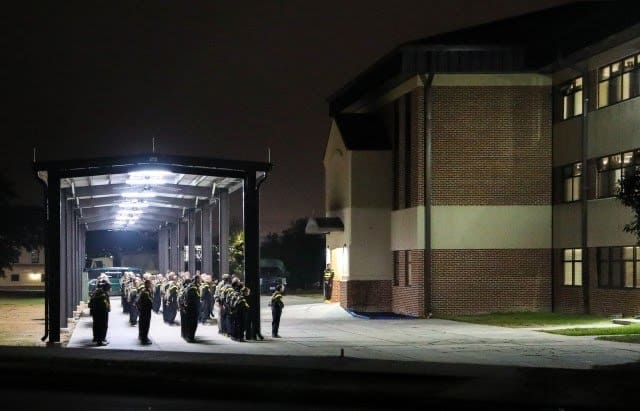
“You have to really care for the trainees and care about the product you are putting out to do this kind of job.”
No one at the U.S. Army Drill Sergeant Academy said the role of U.S. Army drill sergeant was going to be easy. In fact, they clearly explained the challenges. Yet, among the long, and somewhat grueling days, they said there would be rewards. In just a few cycles on the trail, Perkins has seen those rewards and that is a product she has found pride in.
“There have been moments when I am teaching a class on why a regulation is the way it is, and it is very rewarding to see that light just click on for them. Helping them understand takes away any obstinacy. When you can get into why things are important, it really helps them connect with the Army in general and the material you are putting out.”
Finding a way to connect the trainees with the Army is a way to ensure our Nation’s future, said Perkins.
“That is what we are defending–that heritage going into the future. We are building a stronger Army. A more competent Amy. A more intelligent Army. All those compiling factors are what you, as a drill sergeant, are working to instill in those trainees who will defend our Nation eventually. So the product you put out, that time you put into that trainee, really reflects, and will define our future Army.”
Knowing she is playing a part, making a difference in not only the lives of future Soldiers but the Nation itself, makes Perkins immensely happy and proud to be a drill sergeant.
“It is always said, ‘the trainees are a direct reflection of their leadership.’ That really makes me feel that what I put into them, is exactly what they are going to put out into the rest of the Army. So, that is a really good feeling.”
By MAJ Michelle Lunato


Drills without combat patches… the new normal?
Probably Command decision so as not to offend .. a la Col. Hodne and the BCT out at Carson’s grand idea…
It probably is the new normal. The large scale deployments that were typical between 2002 to 2014 or so are over. I doubt the Army can find enough NCOs with combat patches to supply the number of new Drills required. I went through Infantry OSUT in 1985. That was only around 12 years after Viet Nam and none of our drill sergeants wore combat patches. That was the norm back then and it will again be the norm at some point in the future if deployments stay small or go away altogether.
Drills have not always needed combat patches. Mine back in 90 did not have one. A drill with a combat patch might be preferable however this is also not an 11 bravo base.
Same here, Basic, Jump and Rigger school not one combat patch
Did run into a few Panama Vets till 92-93, and one had jumped into Panama
Now of course once GW1 finished there were combat patches everywhere, but still going through PLDC and Air Assault school there were not many there still
The days of everyone deploying to a combat zone are over. Some units simply have other missions. There are BDEs which haven’t deployed to a combat zone in almost a decade. A non-SOF deployment in the last 6 years doesn’t necessarily equate to much useful experience anyway. This Drill Sergeant likely didn’t miss much from not sitting on Bagram for 10 months.
Wow
When I attended BCT almost 20 years ago at Ft. Jackson, under 28th Inf, we only had one Drill with a combat patch and that was SFC Thorpe. Saw a lot of Jump and Assault wings…but SFC Thorpe was a gem hidden in the carbon.
Somewhere, Sgt Hulka is cringing
Didn’t even have time to think about women during my time at mcrd San Diego. Just weren’t any around. We were convinced the penicillin shot killed our libido.
Throwing shapely women into recruit training should only increase our lethality. I’m certain of it.
Her gender has nothing to do with her capability as a DI. I think you need to calm your hormones and look at this Drill Sargents accomplishments rather than anything else. PIGs like you give all men a bad name!
Hey 100 Woke point for you! But seriously in all of modern warfare there where only a few Russian peasant women able to handle close combat with consistency, and that’s a historical fact, combat support roles like this yeah okay but don’t go applying the GI Jane extreme outlier in a blanket fashion there Sgt Soy.